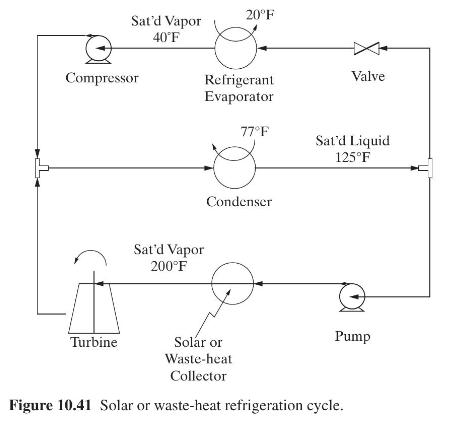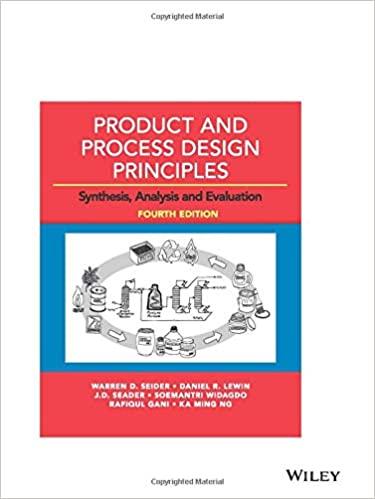Consider the solar or waste-heat refrigeration cycle in Figure 10.41, which was proposed by Sommerfeld (2001). In
Question:
Consider the solar or waste-heat refrigeration cycle in Figure 10.41, which was proposed by Sommerfeld (2001). In addition to the conventional refrigeration loop, a portion of the condensate is pumped to an elevated pressure, where it is vaporized using solar energy or low-temperature waste energy in a chemical complex. Its saturated vapor effluent is expanded to recover power in a turbine and mixed with the gases from the compressor.
Use a process simulator to solve the material and energy balances for the following specifications:
\(\mathrm{R}-134\) a refrigerant 4-ton refrigeration load at \(20^{\circ} \mathrm{F}\)

Refrigerant evaporator effluent-saturated vapor at \(40^{\circ} \mathrm{F}\)
Condenser heat rejected to environment at \(77^{\circ} \mathrm{F}\)
Condenser effluent-saturated liquid at \(125^{\circ} \mathrm{F}\)
Solar or waste-heat available at \(220^{\circ} \mathrm{F}\)
Solar or waste-heat collector effluent-saturated vapor at \(200^{\circ} \mathrm{F}\)
Isentropic efficiency of the compressor \(=70 \%\)
Isentropic efficiency of the turbine \(=90 \%\)
Isentropic efficiency of the pump \(=100 \%\)
(a) Determine the flow rates of refrigerant in both loops; the three operating pressures; the condenser and collector heat duties; the power consumed or generated by the compressor, pump, and turbine; and the coefficient of performance, lost work, and thermodynamic efficiency for the refrigerator.
(b) Vary the condenser effluent temperature to determine its effect on the solution in (a).
Step by Step Answer:

Product And Process Design Principles Synthesis Analysis And Evaluation
ISBN: 9781119355243
4th Edition
Authors: Warren D. Seider, Daniel R. Lewin, J. D. Seader, Soemantri Widagdo, Rafiqul Gani, Ka Ming Ng





